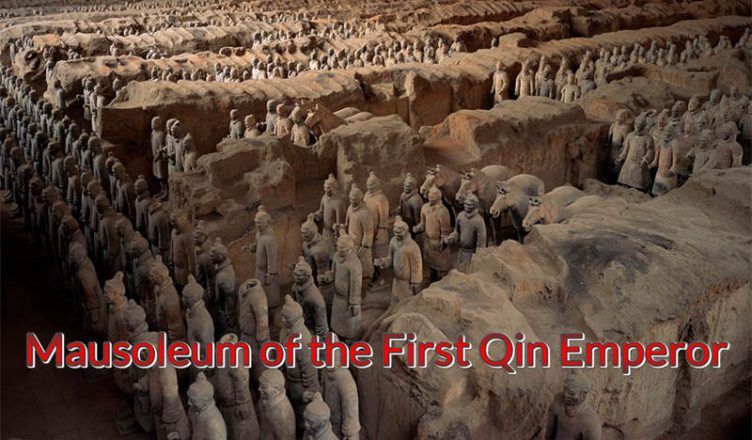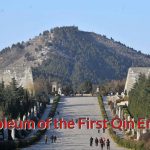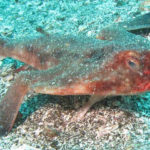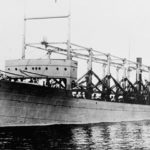In the heartland of China lies a monumental testament to ancient power and ambition—the Mausoleum of the First Qin Emperor. This extraordinary archaeological site unravels the story of Emperor Qin Shi Huang, the first ruler to unify China, whose mausoleum stands as a marvel of intricate design and historical significance. Let’s embark on a journey to uncover the secrets buried within the layout, artifacts, and the extensive archaeological excavations of this awe-inspiring monument. The Mausoleum of the First Qin Emperor offers a gateway to the past, allowing us to explore the rich tapestry of China’s cultural, scientific, and artistic heritage. Let’s now delve into the layout and archaeological achievements of the Mausoleum of the First Qin Emperor.
Mausoleum of the First Qin Emperor Layout
Overall Layout The layout of the Mausoleum of the First Qin Emperor is modeled after the old capital of Xianyang, essentially forming a layout in the shape of the Chinese character “回” (meaning “return” or “come back”). The mausoleum area is primarily composed of several components, including the underground palace, the burial mound, inner and outer city walls, the main hall and side halls, garden temples, officials’ residences, and accompanying burial pits. The layout of the Qin Shi Huang’s tomb includes artificial moats and the use of natural barriers as boundary markers. The boundaries of the mausoleum are marked by natural obstacles such as mountains, rivers, and canals, with necessary artificial adjustments. Since the capital of Qin Shi Huang was in Xianyang, the layout of his tomb follows the pattern of the old capital, resembling a “回” shape. The structure bears some resemblance to the pyramids of ancient Egypt. The main foundation is the burial mound, surrounded by inner and outer double walls. Around the walls are towering gateways, accompanied by over six hundred burial mounds and accompanying pits, forming the entire layout of the Mausoleum of the First Qin Emperor.
1. Specific Layout Inner City Underground Palace:
Through research on the underground palace, archaeologists have determined the length, width, and depth of the palace walls. The south wall is 460 meters long, east to west width is 39 meters, with an overall width and depth of approximately 4 meters. The top is located 7 to 4 meters below the surface and is constructed with unbaked red brick tiles. The palace walls have gates on all sides, with five inclined gateways on the east, and one each on the north and west sides. The specific locations and numbers on the south side have yet to be explored. The total area of the underground palace, within the range of the palace walls, is approximately 18,030 square meters, forming an almost square shape when viewed horizontally. This is nearly thirty times larger than the Qin Gongyi No. 1 tomb, the largest tomb from the pre-Qin era excavated in China. Based on research, the depth of the underground palace is estimated to be about 50 meters, relying on records from Sima Qian and the depth of the ancestral tomb of Qin Shi Huang.
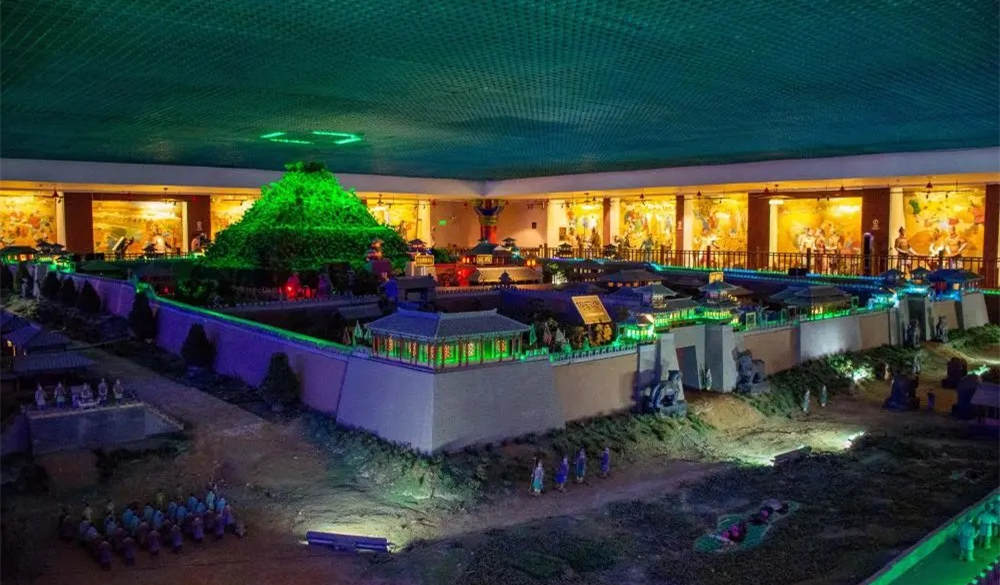
2. Main and Side Halls:
Research on the main and side halls reveals that they represent the main ceremonial buildings in the imperial tomb complex, representing the main hall, side halls, and other structures where Qin Shi Huang lived during his lifetime. The design of the main and side halls originated in the Qin Dynasty and continued through the Han Dynasty. The main buildings in the imperial tomb complex are the main and side halls, located north of the burial mound and the inner city. The total area of the buildings on the ground is about 187,500 square meters, forming a densely built and grand imperial palace complex. However, the preserved bases of the main and side halls today are only about one-third of the original size, scattered and in ruins. Some bases of the buildings are only remnants, while others are completely gone.
3. Burial Mound:
Research on the burial mound reveals that it is constructed with rammed earth in the southern half of the tomb complex. Its shape resembles an inverted bucket, slightly flat on top, with two sloping terraces forming three tiered levels. The edges of the burial mound have suffered damage, resulting in exposed cliffs, especially on the west, south, and east sides, with the east end being the most prominent. Some smaller cliffs at the west and south ends are generally attributed to early human excavation. According to the records of the “Investigation of the Exposed Site of Qin Shi Huang Emperor’s Mausoleum,” the area of the original burial mound in Xi’an was approximately over 50,000 square meters, with a height of about 115 meters. However, after more than two thousand years of natural erosion and human exploitation, the current area of the burial mound is much smaller, with a base area of only about 10,000 square meters and a height of around 87 meters. Additionally, the exposed rammed earth has suffered from weathering, powdering, peeling, cracks, moss, mold, rodent holes, and ecological erosion.
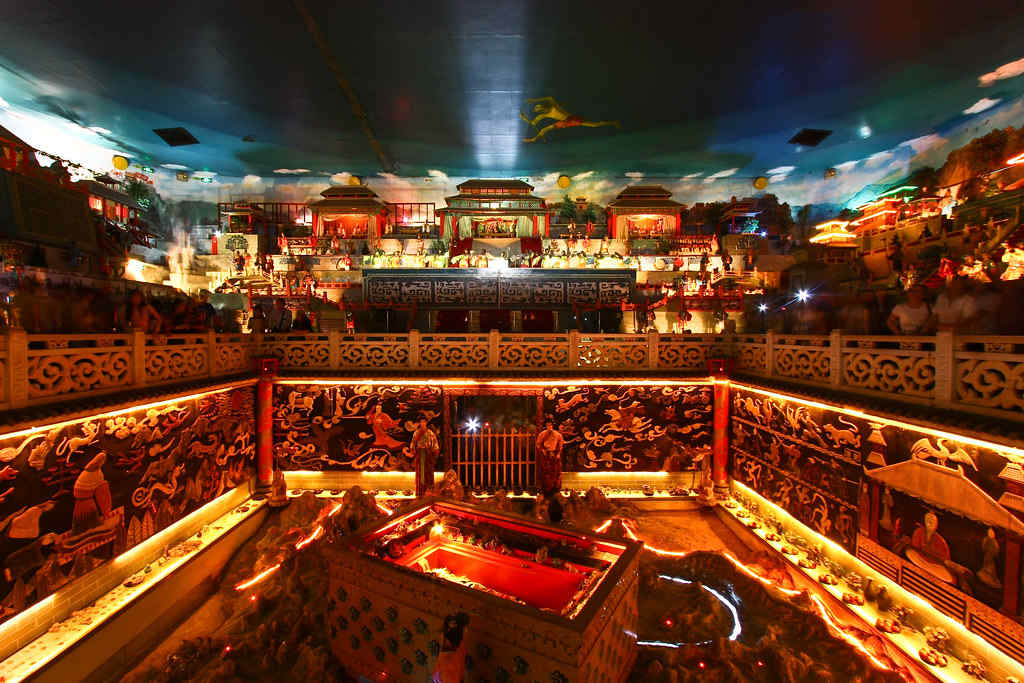
4. Outer City
Through the study of the inner and outer city walls, archaeologists have discovered that there are two layers of city walls on the ground, representing the inner and outer cities. The bronze version of the territory map is carved on the plan of the Zhongshan King’s tomb, depicting double concentric city walls. The inscription mentions an “inner palace wall” but not an “outer palace wall.” Based on this, it is believed that there should be an outer palace wall, but it is not found on the map because the city walls on the territory map are essentially the same as the internal city walls of the Mausoleum of the First Qin Emperor. Therefore, it is believed that a larger outer city wall will be discovered in the Mausoleum of the First Qin Emperor. After surveying, the outer city walls include the east wall, north wall, west wall, south wall of the outer city, and the north-south wall between the inner and outer cities. After measurement, the inner city has a rectangular shape with a side length of about 3,840 meters. The north wall has a gate, and each of the east, west, and south walls has one gate. The inner city is the location of the burial mound. The outer city also has a rectangular shape with a side length of about 6,210 meters, with one gate at each of the four corners. The tomb area is in the south, while the main and side hall buildings are in the north.
5. Beyond the Outer City
On the west side of the outer city wall, two building sites were discovered, and one building site was found on the north side of the north wall, forming part of the garden temples and officials’ residences. At a distance of 1,300 meters north of the outer city, rammed earth walls, houses, drainage pipes, wells, ash pits, etc., were discovered, possibly representing official residences and other buildings built during the construction of the mausoleum. At the foot of the Li Mountain in the southeast of the outer city, there are rammed earth flood embankment ruins.
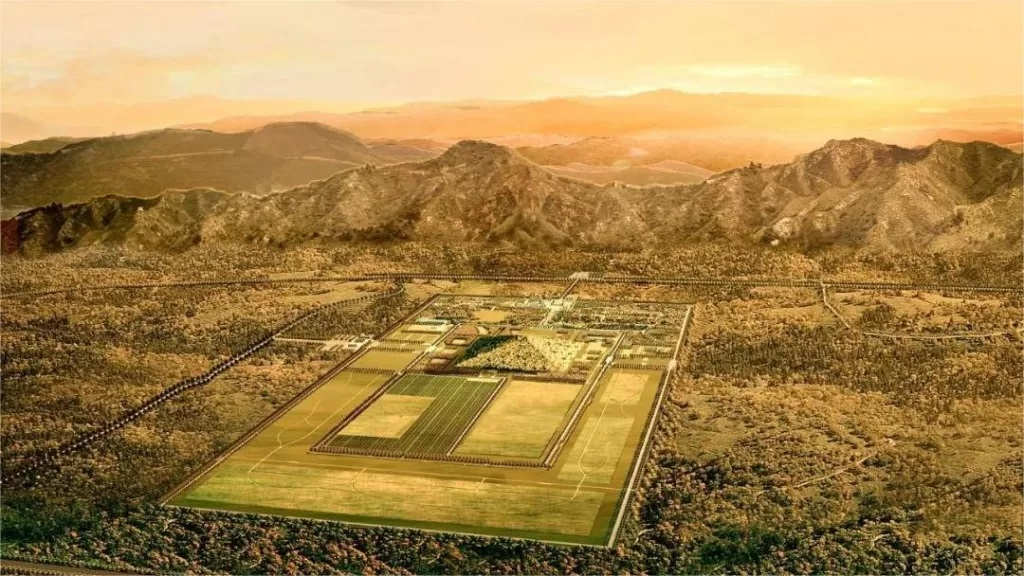
Finally, in the area beyond the outer city wall, to the east, besides the well-known Qin Terracotta Army pits, there are 98 small horse stable pits and numerous accompanying tombs. To the west, there are three burial grounds for construction personnel, brick and tile kiln sites, and stone quarry sites. To the north, there were storage pits containing animal remains and turtles, the official residence of personnel overseeing the mausoleum, and the ruins of Liyi City. To the south, near Li Mountain, there is a flood embankment about 40 meters wide.
Archaeological Excavation of the Mausoleum of the First Qin Emperor
Archaeological Process In 1962, the first comprehensive archaeological survey of the Qin Shi Huang Mausoleum complex was conducted, resulting in the creation of the first layout plan of the mausoleum. Subsequently, on January 29, 1974, the Terracotta Army was discovered. In early 1980, the southern wall of the burial chamber was unearthed. Between 1979 and 1982, burial passages on the west and north sides, as well as five burial passages on the east side, were successively discovered.
In 1980, archaeologists excavated two large painted bronze chariots and horses from a burial pit. The first chariot was a double-wheeled, single-poled chariot with a team of horses, weighing approximately 1.061 tons. The second chariot was 317 cm long, 106 cm high, and weighed 1.241 tons, earning it the title of the “Crown of Bronze.”
After 1985, archaeological work on the mausoleum, excluding the Terracotta Army, was temporarily suspended. It resumed in March 1995 to facilitate the widening of the Lintong-Ma highway, leading to the clearance of the burial site. Between 1996 and 1997, a large burial pit of approximately 13,000 square meters was discovered in the southeast between the inner and outer cities.
In July 1998, a trial excavation was conducted on the newly discovered large burial pit, unearthing a large number of blue stone armor pieces, attracting attention from various sectors. In October of the same year, the Shaanxi Provincial Institute of Archaeology and the Qin Shi Huang Terracotta Army Museum collaborated to form a joint archaeological team to systematically excavate and explore the mausoleum.
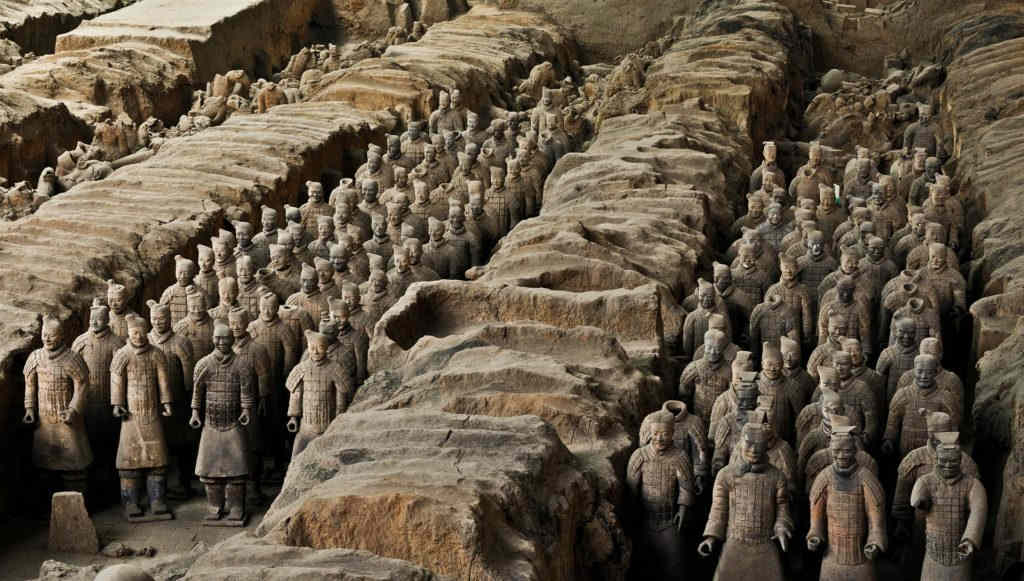
Since 2009, with the gradual improvement of regulations and the enhancement of technological capabilities, archaeological excavation and protection of the Qin Dynasty’s large burial site have achieved multiple new results. There is now a deeper understanding of important issues such as tomb structure, content, and construction. Discoveries include new findings in burial architecture, burial passages, burial chambers, main tombs, outer tombs, and sacrificial pits, contributing to a more comprehensive understanding of the Qin Mausoleum. Currently, over 180 accompanying burial pits have been excavated in the Emperor Qin’s burial area, containing a diverse range of artifacts such as bronze chariots and horses, exotic birds and animals, figurines for various performances, stone armor, and the Terracotta Army.
The most recent archaeological achievement, as of December 2019, was the excavation of a “middle character-shaped” tomb labeled as No. 1 tomb (QLCM1), announced by the Qin Shi Huang Mausoleum Museum, yielding significant results.
Archaeological Achievements
1. Terracotta Army Pit
The excavated terracotta figures include various types such as cavalry, infantry, drummers, and charioteers. They come in three sizes: large, medium, and small. The large and medium figures are mainly mounted, ranging from 55 to 58 centimeters in height. The small figures are standing, with a height between 40 and 45 centimeters, placed in front and behind infantry formations. Larger and medium-sized figures are finely painted with detailed features, using red and black pigments in addition to the white base, and some facial features are painted in pink. Smaller figures typically have a white base with red pigments used for collars or cuffs. In terms of clothing, the smaller standing figures wear single-layer clothing, while the larger and medium mounted figures wear double-sided clothing, most with crowns. These terracotta figures are crafted to the proportional size of real individuals, with a typical height of around 1.70 meters, portraying a realistic appearance.
2. Stone Armor Pit
The largest burial pit discovered within the city walls of Emperor Qin’s Mausoleum is the Weishan Stone Armor Pit, containing a large number of stone armor and helmets. Approximately 87 stone armor sets and 43 helmets were found. The total number of armor pieces used in the armor and helmets of Emperor Qin’s Mausoleum exceeds five million. The large and extra-large armor pieces measure 7 to 8 centimeters in length and 3 to 4 centimeters in width. Medium-sized armor pieces measure 5 to 6 centimeters in length and 2 to 2.5 centimeters in width, while small armor pieces are 3.5 centimeters long, 1 centimeter wide, and approximately 0.5 centimeters thick. The large and medium armor pieces are square, while the small ones are oval with smooth edges, polished surfaces, and small holes for interlocking. These stone armor and helmets are constructed with bluish-gray limestone pieces connected by flat bronze wires, creating unique armor sets. In this vast Weishan Stone Armor Pit, there are thousands of stone armor pieces, and before the second functional pit, bronze swords, arrowheads, horse reins, bronze chariot components, and other military facilities were also discovered. Therefore, people generally consider this type of burial pit as a military arsenal for the underground palace city of the Qin Terracotta Army.
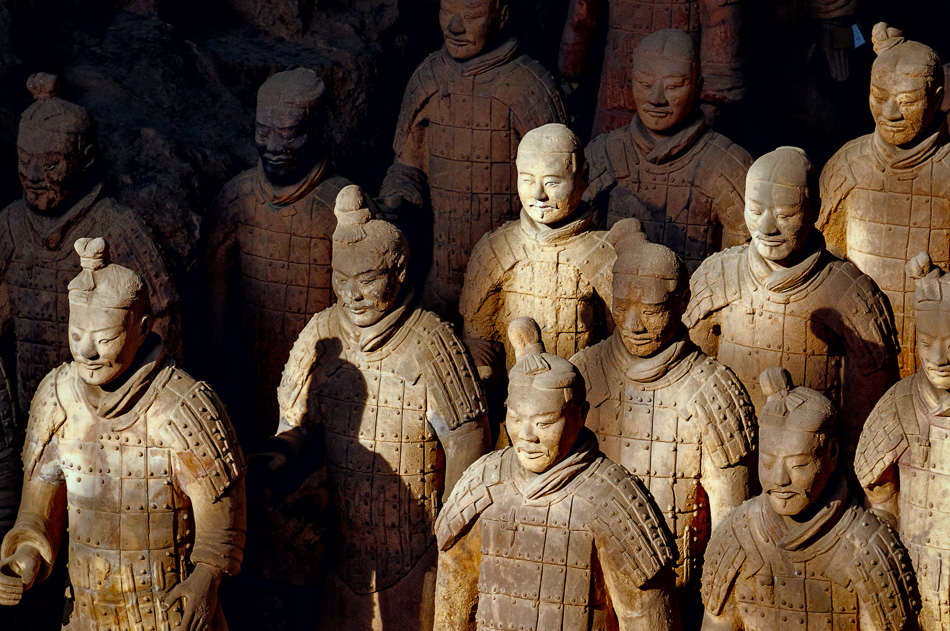
3. Bronze Chariots of Emperor Qin’s Mausoleum
The bronze chariots of Emperor Qin’s Mausoleum are burial artifacts for China’s first emperor, discovered in January 1980 about 20 meters west of the burial mound. These chariots were constructed by reducing the number of vehicles Emperor Qin used during his lifetime by half, all cast in bronze and adorned with numerous gold and silver ingots. They were then painted, making them the most intricate, well-proportioned, and complete burial chariots unearthed in the history of Chinese archaeology, known as the “Crown of Bronze.” The dimensions are approximately half the size of real chariots, horses, and humans, featuring a single-poled, double-wheeled design and being driven by four horses. These chariots, also known as tall chariots, represent a miniature version of the chariots used in the Qin Dynasty’s imperial court. The horses in the chariots exhibit a realistic portrayal with square heads, clear eyes, flat backs, long legs, and thick chests. While the four bronze horses may not fully meet the criteria outlined in the “Horse Standards,” their heads are square, backs rounded, ears finely shaped, eyes like suspended bells, and muscles prominently depicted on the chest and legs. The bronze chariots not only showcase the grandeur of Emperor Qin’s processions but also demonstrate the ancient craftsmanship.
4. Sheep-driven Chariot
In the burial pit west of Emperor Qin’s Mausoleum, a rare discovery has been made—a tangible representation of a six-sheep-driven chariot. Six sheep are arranged in a line, and the sheep bones retain accessories used for pulling the chariot. Unfortunately, the body of the chariot no longer exists. The finding of the sheep-driven chariot in the western burial pit of Emperor Qin’s Mausoleum enriches the content of chariot and horse burial pits. In addition, archaeologists have also uncovered a four-wheeled wooden chariot with an umbrella in the northern burial passage, making it the earliest physical discovery of its kind in China and providing primary material for the study of early large tomb-burial vehicles.
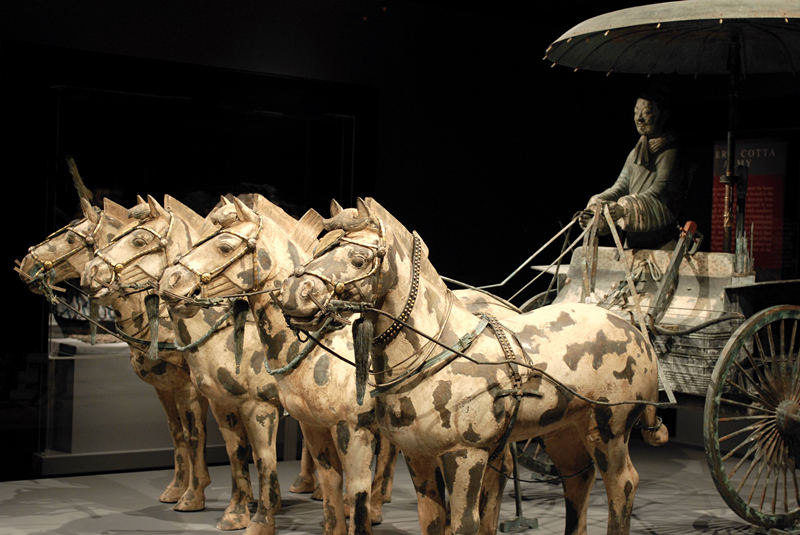
Archaeological Value
According to the evaluation of the World Heritage Committee: Qin Shi Huang, the first ruler to unify the entire nation of China, died in 210 BC and was buried at the center of the mausoleum. The structurally complex Qin Shi Huang Mausoleum was constructed by mimicking the layout of his capital city, Xianyang. The diverse array of terracotta figures, constructed on a large scale, includes various shapes of warriors, horses, and weapons, forming a realistic and perfect masterpiece with significant historical significance.
Simultaneously, research on the Qin Shi Huang Mausoleum has deepened the understanding of important issues such as tomb structure, content, and construction among researchers. New discoveries have been made in the architectural elements of the tomb, burial passages, burial chambers, main tombs, outer tombs, and sacrificial pits. The academic community’s understanding of the Qin Mausoleum is increasingly becoming more three-dimensional.
The Qin Shi Huang Mausoleum, with its grand scale and meticulous arrangement, has yielded important results in cultural, scientific, and artistic research. The opening of the Qin Shi Huang Mausoleum Theme Park signifies another large-scale heritage conservation project in China. It serves as a significant initiative for patriotic education, the preservation of world cultural heritage, and the promotion of the spirit of traditional advanced social development in China. Furthermore, it acts as an effective means to promote China’s social and economic development, facilitate domestic and international cultural exchanges, and improve the living standards of the Chinese people.
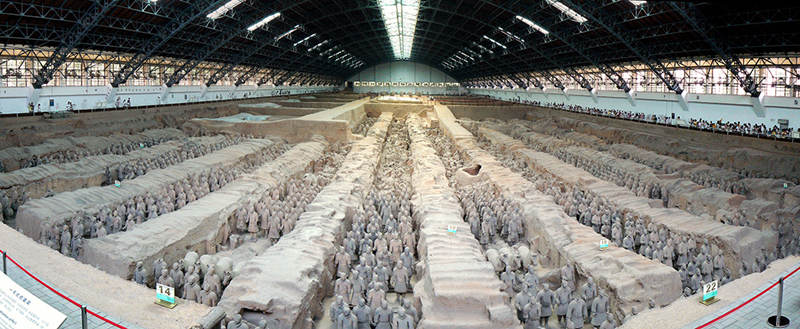
END:
In retrospect, the archaeological achievements and revelations stemming from the exploration of the Mausoleum of the First Qin Emperor not only contribute to our understanding of ancient China but also spark profound reflections on the course of human history. The meticulous study of the tomb’s layout, intricate artifacts, and the elaborate burial arrangements provides a window into the political, social, and artistic dimensions of the Qin Dynasty. The plethora of discovered items, including the famed Terracotta Warriors, bronze chariots, and sacrificial pits, not only showcase the advanced craftsmanship of the time but also offer a nuanced view of the emperor’s vision for the afterlife.
Furthermore, these archaeological findings propel us into a future of heightened curiosity and exploration. The Mausoleum of the First Qin Emperor serves as a catalyst for innovative research methodologies, technological advancements, and interdisciplinary collaborations in the field of archaeology. The preservation and meticulous documentation of these artifacts pave the way for ongoing investigations, fostering a deeper appreciation for the significance of cultural heritage preservation.
As we decipher the mysteries encapsulated within the mausoleum, it becomes clear that the lessons learned extend beyond the confines of ancient history. The discoveries prompt us to contemplate the intricate relationships between power, culture, and the human experience. The Mausoleum of the First Qin Emperor, with its wealth of archaeological treasures, remains not only a testament to the past but also an enduring source of inspiration for the relentless pursuit of knowledge and understanding in the realm of archaeology.
More UFOs and mysterious files, please check out our YouTube channel: MysFiles
Mysterious Stone Spheres around the world – Costa Rica, European forest, Russia, Kazakhstan
